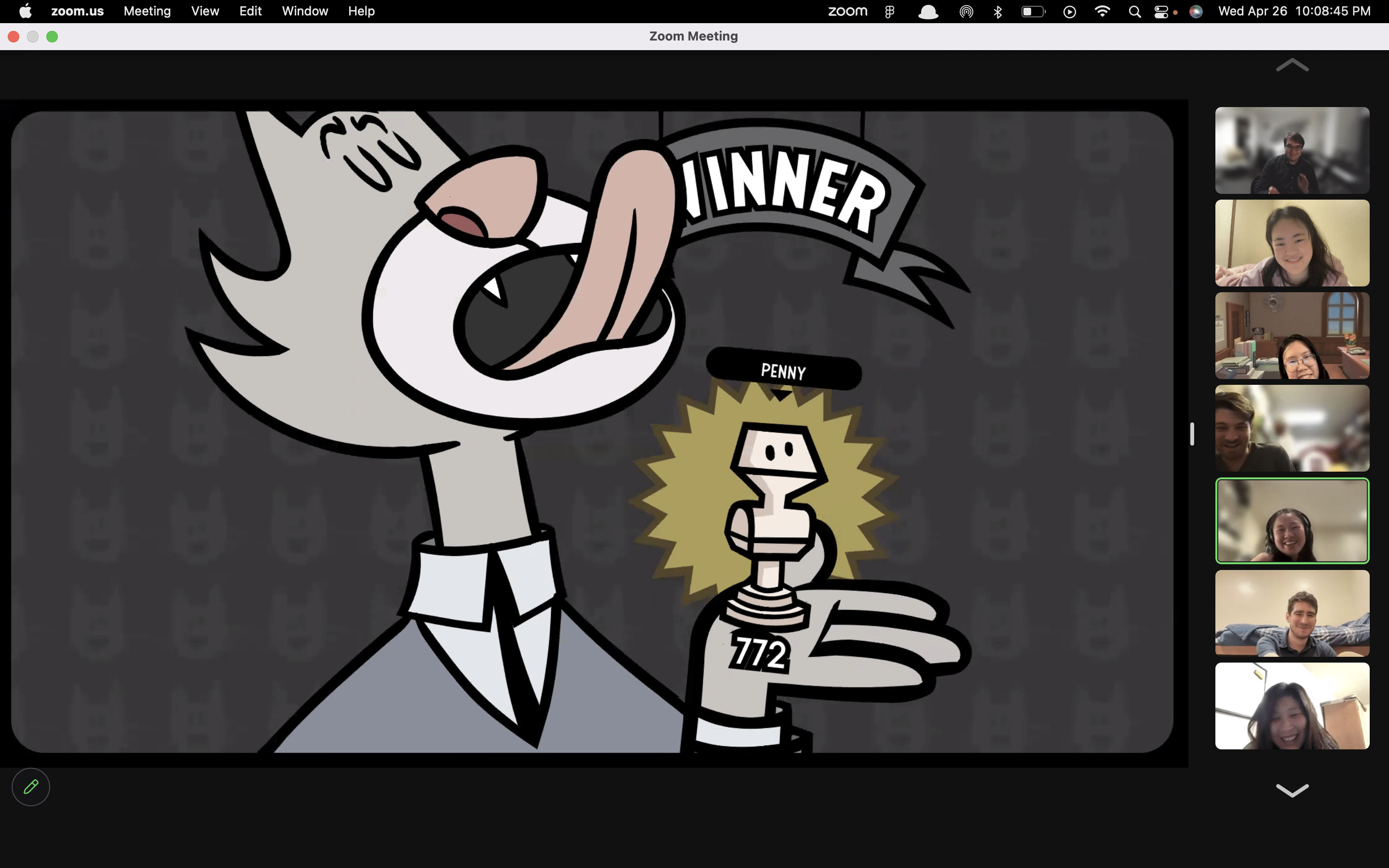Game Introduction
I played some Jackbox games, specifically QuipLash and Split the Room, with some peers over Zoom! So fun. To my knowledge, Jackbox can be bought on Steam, and Jackbox games are usually aimed at teens and adults with around 6-8 players per game. For the purposes of this Critical Play, I’ll be analyzing Split the Room.
Split the Room is a judging game similar to QuipLash but with a twist! The game will give you prompts to write a short in-line response. In QuipLash, pairs of players will be put against each other with the same prompt and try to get the most votes from the audience. In Split the Room, you aren’t trying to get the most votes — you’re trying to get an even split of votes between “yes” and “no” from the audience. Basically, you want to create the most divisive question.
Critical Formal Elements
(I’m discussing the first default round because the second round’s rules get confusing. 😰)
In a default round, each player is given a specific scenario that poses some question (“You’re about to get a radical surgery that gives you the ability to see everywhere, but there’s a side effect. Your taste buds are transmitted…”). Here, the player has to write in a specific detail of the story (”to the inside of a hot sauce bottle at the same time”). Once everyone has done that, the narrator moves through all scenarios. The audience of players besides the one that wrote the question must vote on whether or not they would do it (”Do you get the procedure?”). Depending on how split the audience is the more points the player that wrote the question gets. You get extra points if your audience takes more time to answer your question on average.
I loved the objective of this game— you have to analyze the group of people you’re playing with to understand what they think would be divisive. You also aren’t trying to go for something that’s the funniest, you want to get people to think about what truly is the better option! You don’t want to write something too obvious either since other people will realize and answer too quickly which gets you fewer points.
Aesthetics, Dynamics, Mechanics Example → Expression
I think the obvious type of fun here is Challenge so I wanted to look more into Expression which seems a bit more subtle but I think still counts. We aren’t customizing our appearance or creating avatars, but we’re inserting little pieces of ourselves into the game with each vote and answer. This creates personal relationships between players — we poke fun at each other when one’s answer gets a huge imbalance of votes and we console the person in last place. These dynamics are caused by several mechanics — we put our names in at the beginning and our names are revealed after votes for our questions are counted.

Vulnerability
You have to be willing to be a little out there to get others to laugh with you. I usually play it pretty safe in my daily life, but that’s no fun in the game! You gotta find it in yourself to make those immature jokes and not take yourself so seriously. Some of us (me) could definitely use the reminder.
Signing off,
Annabelle




